This article was co-authored by Courtney Fose, RD, MS. Courtney Fose is a Registered Dietitian and Certified Nutrition Support Clinician at the University of Arkansas for Medical Sciences. She has worked as a Dietitian since 2009, and received her MS in Clinical Nutrition from the University of Arkansas in 2016.
There are 10 references cited in this article, which can be found at the bottom of the page.
wikiHow marks an article as reader-approved once it receives enough positive feedback. In this case, 91% of readers who voted found the article helpful, earning it our reader-approved status.
This article has been viewed 185,027 times.
Managing carbohydrate intake is the foundation of the Atkins diet plan. You need to learn how to calculate the amount of carbohydrates you consume each day and in each meal to properly stick to the diet. In addition to computing your daily carbohydrate intake, you will gradually reintroduce carbohydrates back into your diet in a specific sequence called the carbohydrate ladder.
Steps
Calculating Net Carbs
-
1Understand the net carb concept. The Atkins diet focuses on cutting down on carbohydrates so you need to learn how you can monitor the amount of carbs you are consuming. To do this you need to understand what net carbs are. Net carbs simply represent the total carbohydrate content of food after you have deducted the fiber content and any sugar alcohols.[1]
- You only need to count net carbs instead of total carbohydrates because these are what significantly impact your blood sugar level.
- Foods which are low in net carbs don’t have a major impact on your blood sugar level, and as such are less likely to disrupt your weight loss.
- Low net carb foods include fruits and vegetables which are rich in important nutrients like vitamins and minerals.
-
2Learn the formula for calculating net carbs. The formula for calculating net carbs is straightforward enough. You simply need to subtract the dietary fiber and the sugar alcohol content from the total carbohydrates. This will give a basic number which you can use to monitor your carb intake while on the Atkins Diet. The formula for calculating net carbs is:
- Net Carbs = Total Carbs – Dietary Fiber – Sugar Alcohol.[2]
- This is a simple formula but it’s fine for the purposes of the diet and won’t take you long to remember.
Advertisement -
3Find the number of total carbohydrates on a nutrition label. The easiest way to calculate the net carbs with these formula is to look at the information on the nutrition label of the food. All food that comes in appropriate packaging will have one these labels which will give you the figures you need to determine the net carbs.
- Start by finding the number of total carbohydrates in a food on the food’s nutrition label.
- Total carbohydrates are typically found in the top section of the label after the product’s sodium content.
-
4Subtract the fiber. Now find the quantity of dietary fiber in the food. Dietary fiber is often located as a subheading beneath the total carbohydrate count. Subtract the amount of dietary fiber from the amount of total carbohydrates.
-
5Deduct the sugar alcohols. Sugar alcohols are not easily absorbed by the body, so they do not count against your net carb total. If the food label contains a listing for sugar alcohol quantity, then you can subtract sugar alcohol content from your total carbohydrate count in addition to subtracting dietary fiber.
- There is some debate about the impact of sugar alcohols on blood pressure so you should not assume that is fine to consume these in large amounts just because they don’t contribute to your net carbs.
- Sugar alcohols contribute to calories and can have a laxative effect when consumed in large portions.[3]
-
6Note the net carb count. Once you have subtracted the fiber and sugar alcohols from the total carbohydrates you will have calculated the net carb value. Make a note of the figure and don’t forget to adjust it according to how many grams of the food you are eating.
- You may notice some foods now advertised with labels that claim to have low net carbs. There is no legal definition of net carbs so it’s a good idea to do your own calculation too.[4]
-
7Use a carbohydrate-counting guide if there is no label. Calculating net carbs on foods that don’t come with handy nutritional information printed onto the packaging is a little trickier. You still need to use the same basic formula to determine the net carbs. (Net Carbs = Total Carbs – Dietary Fiber – Sugar Alcohol.) In order to do this, you first need to find out the total carbs, dietary fiber, and sugar alcohols content in the food. There are many guides for foods that provide all the useful information that is included on nutrition labels.
- For example, a banana doesn't come with a food label, but you can find the net carb info listed on the Atkins website. A small banana has 20 net carbs.[5]
- You will find that over time you will learn the net carbs of different foods so you don’t have to check them in the guide all the time.
- The guides will also contain other useful nutritional information and help you learn to identify foods to avoid more generally.
Keeping Track of Your Net Carb Intake
-
1Consider using a mobile app. Once you have learned how to calculate your net carb intake you need to actually track how much you are consuming to make sure you stick to the Atkins plan. There are a number of different techniques and technologies that can help you to do this. One good option is to download a carb counting app onto your smartphone.[6]
- It has the advantages of being portable and something you keep with you all day.
- Depending on the app you can also track other nutritional information.
- It will do some of the calculations for you and give you a clear and up-to-date count of your net carb consumption.
-
2Try a digital tracker on your computer. Another digital option is to download a tracker onto your PC or laptop. Like the app this will do a lot of the calculating for you and is likely to contain a variety of other features to help you monitor what you eat more fully. Using one of these programs can often help you to gain a fuller picture of your diet.[7]
- Unlike a smartphone app, it is not something you will carry around with you all day, so you won’t be able to keep it completely up-to-date during the day.
-
3Write out your count by hand. A nice low tech version is simply to write down your net carb intake by hand as you go through the day. You could buy a special notebook and keep it with you. Jotting down your progress can be a good way to really take ownership of your diet plan and have a sense of achievement as you stick to it.
- You won’t get as much analysis and extra information if you write it down yourself.
- But it could be nice to look back through the notebook after you have completed the diet to remind yourself of your progress.
Knowing How Many Carbs to Consume During the Diet
-
1Consume just 20g of net carbs during the induction phase. In the Induction phase, you should consume no more than 20 net carbs per day. In subsequent phases, you can consume more as long as they don’t interfere with your weight loss. Start by consuming 12 to 15 grams of net carbs through eating foundation vegetables.[8]
- Foundation vegetables include leafy greens, broccoli, cauliflower and asparagus.
- Eat high-fat, low-carb dairy products during Induction for your remaining carbs. Examples include hard cheeses, cream and sour cream.
-
2Increase your carb intake gradually. In phase two, OWL (Ongoing Weight Loss), you can add 5 grams of net carbs to your diet each week. As long as you continue to lose weight, you can continue gradually adding more carbohydrates to your diet. If weight loss stalls, you can cut back on your carbohydrates until you start to lose weight again. Start eating nuts and seeds again. Avoid chestnuts, which contain too many net carbs.
- Add in some fruit the next week. You can eat berries, cherries and melon.
- Vary your dairy. After you incorporate fruit, you can add in whole milk yoghurt and fresh cheeses, including ricotta and cottage cheese.
- Add legumes next. These include chickpeas, lentils, peanuts and beans.[9]
-
3Add 10 grams of net carbs each week during phases three and four. These phases, known as Pre-Maintenance and Maintenance, are about finding the right balance to maintain your weight loss.[10] You are working to find your Atkins Carbohydrate Equilibrium, or ACE. Your ACE is the number of net carbs you can consume each day without gaining weight.
- Eat a greater variety of fruit. Enjoy apples, citrus fruits and other fruits that are lower in sugar but high in fiber.
- Start eating high-carb vegetables again. You can add winter squash, peas and carrots back to your diet, but avoid regular potatoes.
- Add whole grains after you add high-carb vegetables. Focus on whole grains and continue to avoid high-carb refined grains such as white bread and white rice.[11]
Expert Q&A
-
QuestionIf a label shows sugar, but not sugar alcohols, do you do anything with this number when calculating carbs?
 Courtney Fose, RD, MSCourtney Fose is a Registered Dietitian and Certified Nutrition Support Clinician at the University of Arkansas for Medical Sciences. She has worked as a Dietitian since 2009, and received her MS in Clinical Nutrition from the University of Arkansas in 2016.
Courtney Fose, RD, MSCourtney Fose is a Registered Dietitian and Certified Nutrition Support Clinician at the University of Arkansas for Medical Sciences. She has worked as a Dietitian since 2009, and received her MS in Clinical Nutrition from the University of Arkansas in 2016.
Master's Degree, Clinical Nutrition, University of Arkansas for Medical Sciences Master's Degree, Clinical Nutrition, University of Arkansas for Medical SciencesExpert AnswerNo, because regular sugar would already be factored into the total carbohydrate content on the food label.
Master's Degree, Clinical Nutrition, University of Arkansas for Medical SciencesExpert AnswerNo, because regular sugar would already be factored into the total carbohydrate content on the food label. -
QuestionWhat are the net carbs for beef?
 Courtney Fose, RD, MSCourtney Fose is a Registered Dietitian and Certified Nutrition Support Clinician at the University of Arkansas for Medical Sciences. She has worked as a Dietitian since 2009, and received her MS in Clinical Nutrition from the University of Arkansas in 2016.
Courtney Fose, RD, MSCourtney Fose is a Registered Dietitian and Certified Nutrition Support Clinician at the University of Arkansas for Medical Sciences. She has worked as a Dietitian since 2009, and received her MS in Clinical Nutrition from the University of Arkansas in 2016.
Master's Degree, Clinical Nutrition, University of Arkansas for Medical Sciences Master's Degree, Clinical Nutrition, University of Arkansas for Medical SciencesExpert AnswerThere are no net carbs in beef. However, if your recipe includes breading or a sauce, you would need to calculate the net carbs for that.
Master's Degree, Clinical Nutrition, University of Arkansas for Medical SciencesExpert AnswerThere are no net carbs in beef. However, if your recipe includes breading or a sauce, you would need to calculate the net carbs for that. -
QuestionDo sugars listed on a product label for flavor factor in the net carbohydrate equation?
 Courtney Fose, RD, MSCourtney Fose is a Registered Dietitian and Certified Nutrition Support Clinician at the University of Arkansas for Medical Sciences. She has worked as a Dietitian since 2009, and received her MS in Clinical Nutrition from the University of Arkansas in 2016.
Courtney Fose, RD, MSCourtney Fose is a Registered Dietitian and Certified Nutrition Support Clinician at the University of Arkansas for Medical Sciences. She has worked as a Dietitian since 2009, and received her MS in Clinical Nutrition from the University of Arkansas in 2016.
Master's Degree, Clinical Nutrition, University of Arkansas for Medical Sciences Master's Degree, Clinical Nutrition, University of Arkansas for Medical SciencesExpert AnswerRegular sugar would already be factored into the total carbohydrate content on the food label.
Master's Degree, Clinical Nutrition, University of Arkansas for Medical SciencesExpert AnswerRegular sugar would already be factored into the total carbohydrate content on the food label.
Warnings
- Don’t allow yourself to gain more than 5 pounds without addressing your carbohydrate intake. Lower your daily carb intake by 10 to 20 grams until your excess weight retreats.⧼thumbs_response⧽
- Talk with your primary care doctor before starting this diet and plan to continue regular check ups with your doctor as well.⧼thumbs_response⧽
Things You'll Need
- Carbohydrate counting guide
References
- ↑ http://www.atkins.com/how-it-works/library/articles/what-are-net-carbs
- ↑ http://www.atkins.com/how-it-works/library/articles/what-are-net-carbs
- ↑ http://www.webmd.com/women/features/net-carb-debate?page=2
- ↑ http://www.webmd.com/women/features/net-carb-debate
- ↑ https://www.atkins.com/how-it-works/atkins-20/phase-4/acceptable-foods-atkins-20-phase-4
- ↑ http://www.atkins.com/how-it-works/free-tools/mobile-app
- ↑ http://www.atkins.com/how-it-works/free-tools
- ↑ http://www.atkins.com/how-it-works/atkins-20/phase-1
- ↑ http://www.atkins.com/how-it-works/atkins-20/phase-2/acceptable-foods-atkins-20-phase-2
About This Article
To count carbs on the Atkins diet, you’ll need to calculate the net carbs from your food, since these are what affect your blood sugar levels. You can do this by subtracting dietary fiber and sugar alcohol content from the total carbohydrates, which you can find on the nutrition label of your food packaging. For example, find the total carbs, subtract the dietary fiber, and then the sugar alcohol content to find your net carbs. For foods with no label, like loose fruit, you can use a guide like the Atkins website to find out the net carbs. If you want to track your total net carbs, consider downloading a carb-counting app on your phone to make things easier. Alternatively, you can use a notebook if you prefer to write it by hand. For more tips from our Dietary co-author, including how many carbs to consume a day on an Atkins diet, read on!






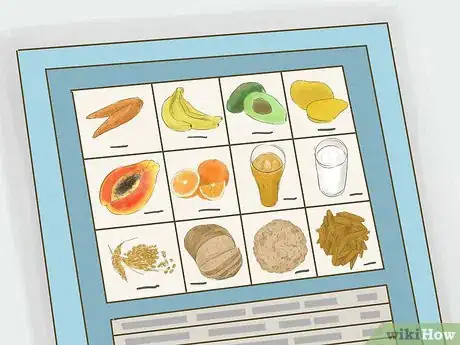

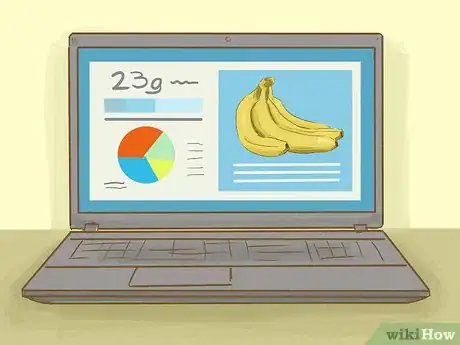

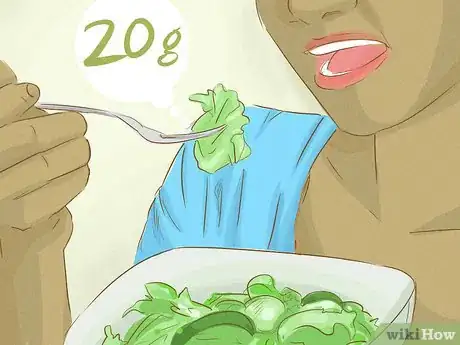
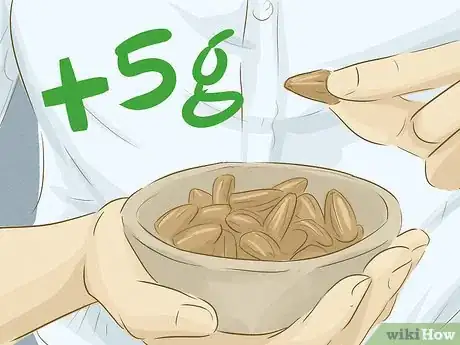
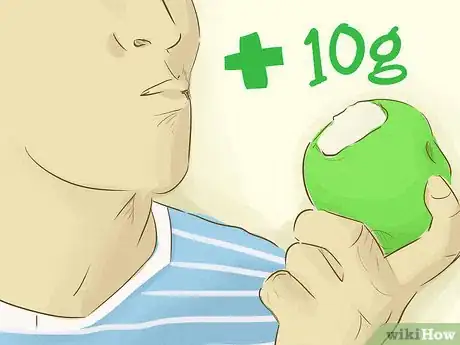





-Plan-to-Do-Step-17.webp)


















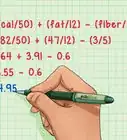





































Medical Disclaimer
The content of this article is not intended to be a substitute for professional medical advice, examination, diagnosis, or treatment. You should always contact your doctor or other qualified healthcare professional before starting, changing, or stopping any kind of health treatment.
Read More...